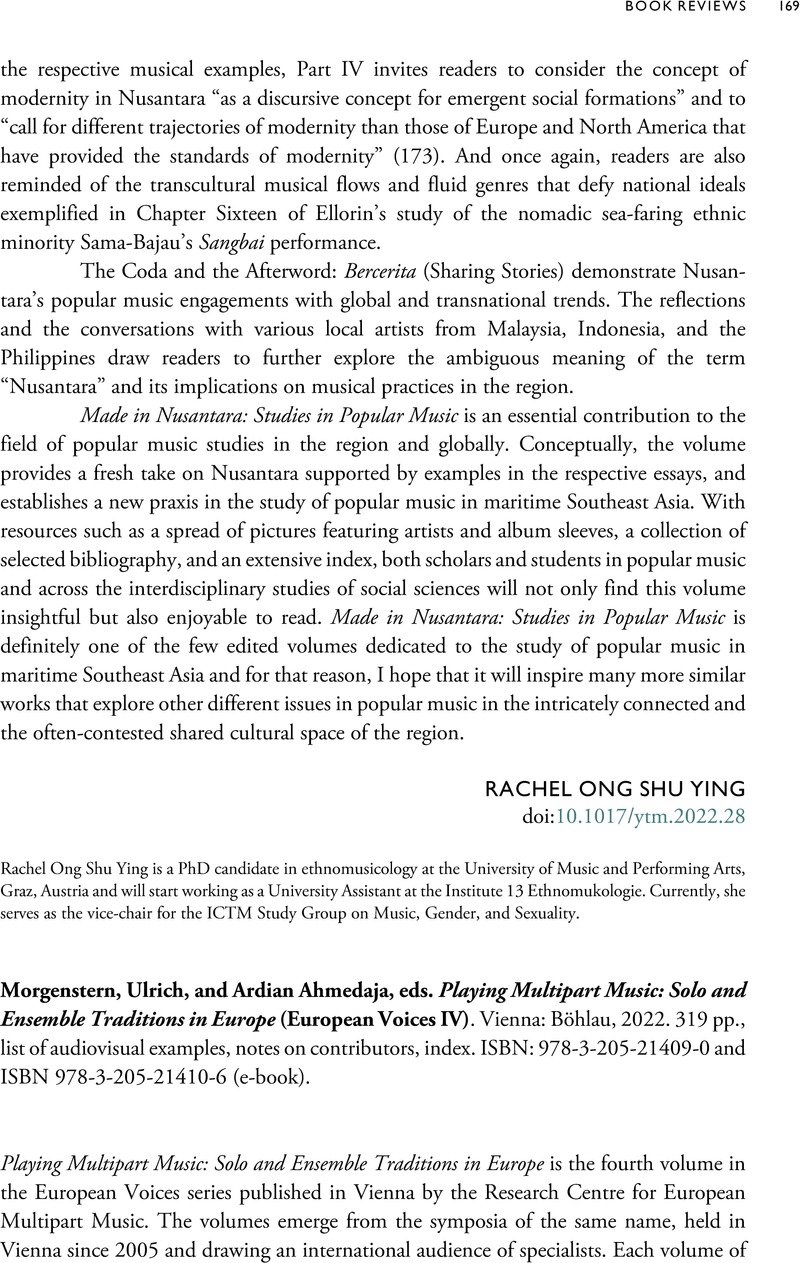No CrossRef data available.
Article contents
Ulrich Morgenstern, and Ardian Ahmedaja, eds. Playing Multipart Music: Solo and Ensemble Traditions in Europe (European Voices IV). Vienna: Böhlau, 2022. 319 pp., list of audiovisual examples, notes on contributors, index. ISBN: 978-3-205-21409-0 and ISBN 978-3-205-21410-6 (e-book).
Review products
Ulrich Morgenstern, and Ardian Ahmedaja, eds. Playing Multipart Music: Solo and Ensemble Traditions in Europe (European Voices IV). Vienna: Böhlau, 2022. 319 pp., list of audiovisual examples, notes on contributors, index. ISBN: 978-3-205-21409-0 and ISBN 978-3-205-21410-6 (e-book).
Published online by Cambridge University Press: 08 February 2023
Abstract
An abstract is not available for this content so a preview has been provided. Please use the Get access link above for information on how to access this content.

- Type
- Book Reviews
- Information
- Copyright
- © International Council for Traditional Music 2023


